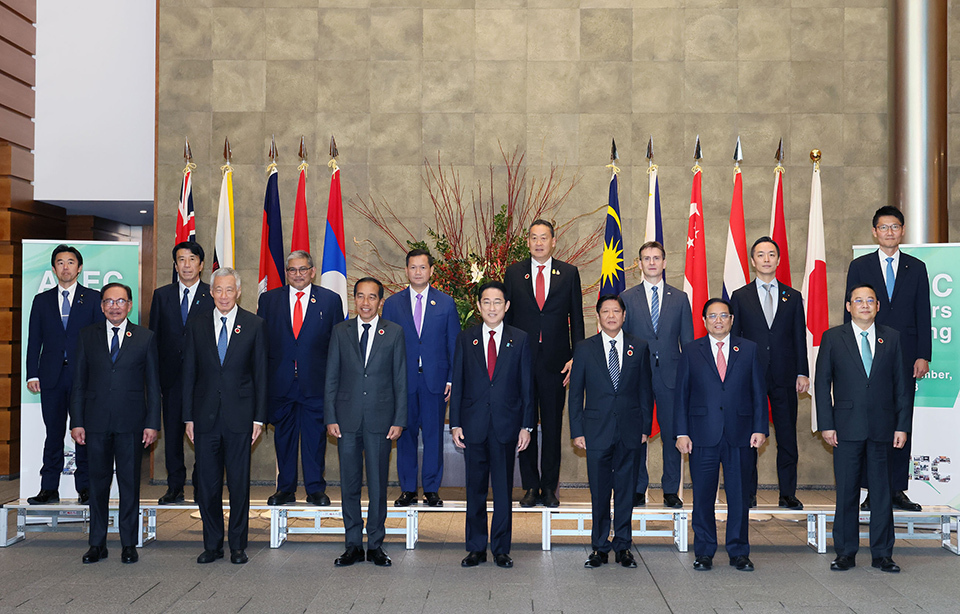Japan’s carbon system shifts from pilots to price
Japan’s AZEC push advances GX-ETS compliance as core CPI prints 2.9% and 10-year JGBs ~1.67%. Watch ^N225 earnings sensitivity, JPY=X terms of trade, and CL=F versus BZ=F as carbon pricing reorders merit and capital allocation across power and industry.

Japan’s publication of outcomes from the AZEC carbon-market meetings marks a shift from consultation to market design, with direct implications for regional capital allocation. The policy core is the Green Transformation Emissions Trading Scheme. Phase 1 (FY2023–FY2025) has operated as a voluntary transition via the GX League and credit trading; Phase 2 (from FY2026) converts to a compliance cap-and-trade with price bands and staged auctioning. The legal foundation was enacted in May 2025. The system now advances alongside an explicit supply-side strategy: net greenhouse-gas emissions including removals fell to 1.017 billion tCO₂e in FY2023, down 27% from FY2013. Power-mix data for FY2023 confirm mechanics for further decarbonisation—renewables 22.9%, nuclear 8.5%, thermal 68.6%—which establishes the abatement frontier that an explicit carbon price can reorder.
The transmission channel is clear. A mandatory allowance creates a marginal cost of carbon for covered emitters and a reference price for uncovered supply chains. Japan’s economy, at roughly $4.28 trillion in 2024 current prices, exports goods and services worth 21.9% of GDP (2023). Cap-and-trade embeds carbon costs into traded manufactures—autos, machinery, chemicals, electronics—where competitiveness depends on process efficiency and embedded-emissions disclosure. The Joint Crediting Mechanism widens the menu of compliant reductions: as of August 2025, partnership documents are signed with 31 countries, allowing Japanese firms to procure high-integrity credits aligned with Article 6 accounting. AZEC’s emphasis on MRV and registry interoperability reduces double-counting risk and lowers the discount investors apply to credits used for compliance, compressing the “quality basis” that has fragmented voluntary markets.
The macro overlay is manageable if policy sequencing holds. Japan remains energy-import dependent; oil and LNG benchmarks still affect domestic prices, but a progressively tighter cap shifts the technology ranking even when crude (CL=F) and Brent (BZ=F) are benign. National core CPI ran at 2.9% year-on-year in September 2025; the 10-year JGB yield hovered near 1.67% in late October. A transparent allowance path, gradual coverage expansion, and revenue recycling can keep breakevens anchored while crowding in investment to grids, storage, electrified processes, and demand response. The distributional hit is containable if auction proceeds fund low-income offsets and SME efficiency upgrades. The banking channel should remain stable given ample liquidity buffers; higher capex by large emitters is likely financed through retained earnings and domestic bond markets rather than abrupt credit reallocation.
Market structure will do the near-term work. In the power sector, allowance costs tighten merit-order spreads and lift capture rates for low-carbon generators. In industry, differentiated heat and process intensities will widen issuer dispersion: companies with emissions intensity above peer medians face a measurable risk premium over the JGB curve during the first compliance cycles, narrowing as disclosures standardise. Equity factor screens will start to price lifecycle intensity; for index exposures, investors should expect tracking-error contributions from transition-risk tilts even if top-line indices such as the Nikkei 225 (^N225) remain driven by earnings and currency. On FX, USD/JPY (JPY=X) sensitivity will track terms of trade and rate differentials more than carbon policy itself, but improved energy intensity reduces shock amplitude from imported-fuel swings.
Regional spillovers are non-trivial. If AZEC aligns crediting methodologies with Article 6 and links registries, Japan can channel compliance demand into ASEAN supply—industrial efficiency, methane abatement, and grid projects—lowering domestic compliance costs while exporting capital discipline. That creates a measurable financing vector for Asia’s transition without relying on weak-integrity offsets. The risk set is defined. Fragmented standards would widen basis risk versus other systems and depress liquidity. Over-reliance on hard-to-verify categories would invite reputational drawdowns and widen corporate spreads for exposed issuers. A slump in global energy prices could delay private abatement unless the cap trajectory is binding and credible.
The signal is policy credibility backed by data and sequencing. Investors should track four indicators on fixed horizons. By FY2026 Q4, publishable allowance bands and first clearing prints should reveal scarcity and implied abatement costs; sustained settlements that map to observed marginal abatement will confirm integrity. By FY2027, non-fossil generation share should exceed one-third on a fiscal-year basis if price signals bite.
By end-FY2027, the JCM should show materially higher authorisations and retirements, with cumulative volumes rising in step with Article 6 reporting. Through FY2026–FY2028, a 10-year JGB range near 1.5–1.9% alongside core CPI around 2–3% would indicate the transition is proceeding without macro slippage. If these markers hold, Japan will establish a bankable domestic carbon price that reallocates capital across Asia’s production networks rather than outsourcing credibility to external systems.





